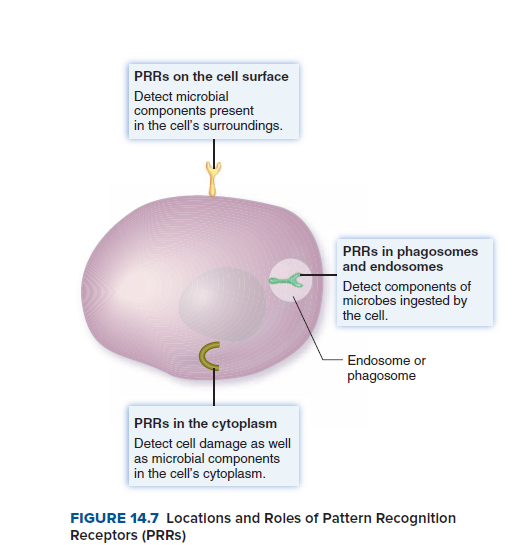PRRS on the cell surface Detect microbial components present in the cell's surroundings. PRRS in phagosomes and endosomes Detect components of microbes ingested by the cell. Endosome or phagosome PRRS in the cytoplasm Detect cell damage as well as microbial components in the cell's cytoplasm. FIGURE 14.7 Locations and Roles of Pattern Recognition Receptors (PRRS)
Control of Microbial Growth
It can be defined as the process to inhibit or prevent the growth of the population of microorganisms. It usually involves the use of physical and chemical agents to the growth of microorganisms. It is very important to control the growth of microorganisms, especially in the pharmaceutical and biotechnology industries, academic research, medical field, and food industry.
Sterilization
It is a method for the destruction of all forms of vegetative growth and endospores from a medium. In other words, sterilization can be defined as a method of killing every microbial organism such as bacteria, fungi, etc. present in an object or a medium. There are different strategies present to sterilize an object, like physical methods and chemical methods of microbial control.
Why would a cell produce cytokines when a PRR detects microbial components?

Step by step
Solved in 2 steps


